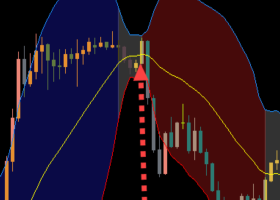
The Next Big FX Trade: Prepare To Fight Central Banks - BofA Merrill
The market has started testing the central banks
Markets have stopped focusing on what central banks are doing and are positioning for what they believe central banks may or may not do. In recent years, FX investors had to focus primarily on getting three key drivers right: global risk sentiment, commodity prices, and which central bank will ease more and deeper into unconventional territory. Risk sentiment and commodities remain key market drivers. However, the market reaction to central bank policies has changed. Five G10 central banks have surprised markets with easing this year, BoJ, ECB, RBNZ, Riksbank and Norges Bank, but their currencies are now stronger—and with the exception of New Zealand, equities are down.
Transition to a new regime and the next big trade
Copy signals, Trade and Earn $ on Forex4you - https://www.share4you.com/en/?affid=0fd9105
We believe that the market reaction to central bank policies this year reflects transition to a new regime, in which investors start speculating which central bank will have to give up easing policies first. It is unlikely, in our view, that the next big FX trade will be from a central bank that surprises markets by easing policies more, which was the case in recent years.
We consider more likely that the next big trade will be from a central bank that gives up easing in response to strong data and rising inflation. A number of pieces of evidence suggest that price pressures may indeed force some central banks to give up easing this year, triggering large FX moves. Which central bank is likely to give up first? We look at a number of indicators to help us determine which central bank is likely to give up easing and eventually tighten policies first.
Our results suggest that inflation pressures and overheating are more likely to force the hand of the Norges Bank, the Riksbank and the Fed to stop easing/tighten, while the ECB, the BoJ and the SNB are likely to retain a loose monetary policy stance and even ease policies further.
What if we are wrong?
We could be wrong if: it takes longer for inflation pressures to emerge and all central banks remain on hold or ease further; inflation pressures emerge in some countries, but central banks ignore them and accept higher inflation in the short term to support their economies; or the world is in a Japan scenario and monetary policies remain accommodative for years to come. We argue that these three scenarios are unlikely. '
Market implications
We argue that positioning for a scenario in which some central banks give up easing is worth the cost.
Our framework supports being long SEK and NOK against EUR and CHF, and being long USD/JPY and short EUR/USD. Although the market is now testing the ECB and the BoJ, EUR and JPY can still weaken with respect to the USD in the months ahead if strong US data force the Fed to tighten. If markets remain fragile and risk sentiment volatile, we would be more cautious about shorting JPY and CHF.From this point of view, short EUR/USD and/or short EUR against the scandies could be good trades to hedge for shifts in central bank policies.
On other crosses, our analysis is bullish AUD/NZD and USD/CAD, and bearish EUR/GBP and cable.


